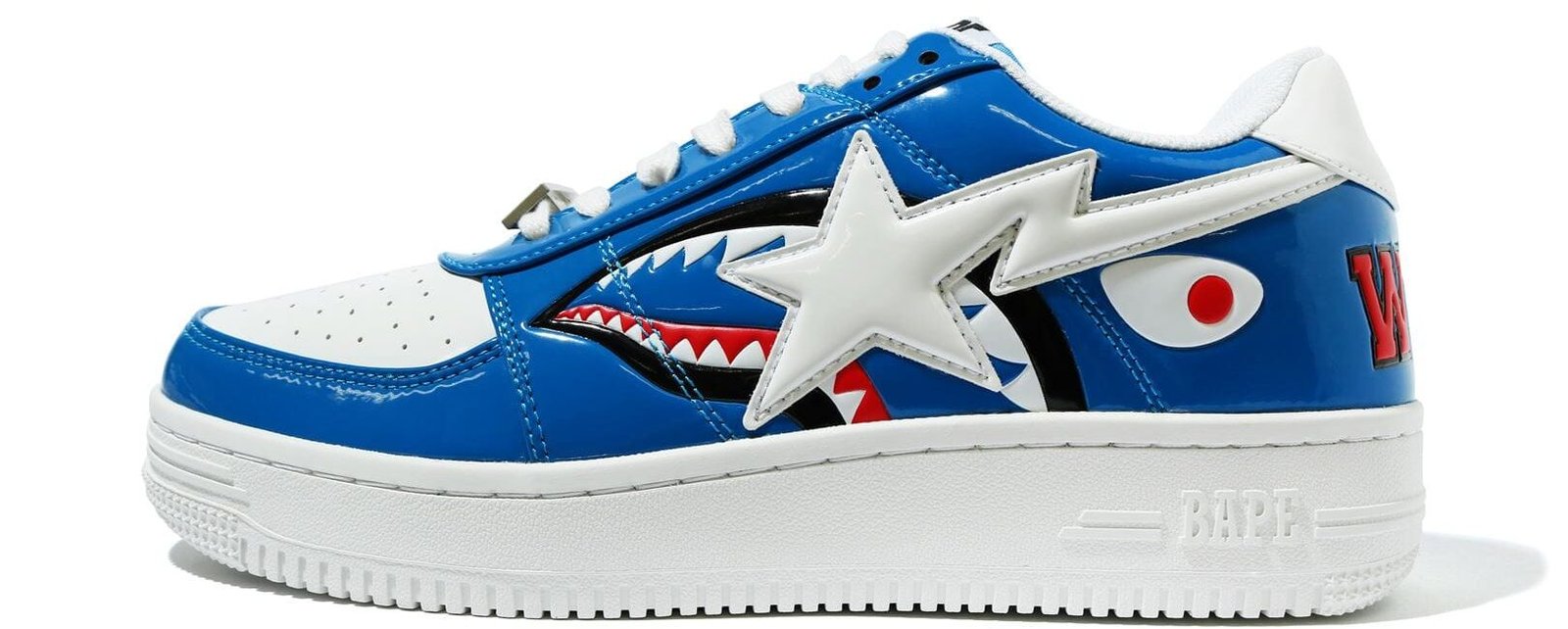
BAPESTA is a legendary sneaker that has transformed the landscape of global streetwear culture. Created by Japanese designer Nigo under his brand A Bathing Ape (BAPE), the BAPESTA is a bold reinterpretation of the Nike Air Force 1. Introduced in the early 2000s, the BAPESTA quickly became a cultural phenomenon, thanks to its vibrant aesthetics, premium materials, and strong association with hip-hop and street fashion. The sneaker became a symbol of exclusivity and bold expression for a new generation of style enthusiasts around the world.
The Influence of Nigo and the Rise of BAPE
To understand the cultural relevance of BAPESTA, one must first explore the creative genius behind it—Nigo. A designer, DJ, and cultural icon in Japan, Nigo founded BAPE in 1993 in Tokyo. His vision was to fuse Japanese pop culture with American hip-hop influence, creating a unique hybrid that appealed to both Eastern and Western audiences. The BAPESTA sneaker, launched around 2002, became one of Nigo’s most successful creations. Its bright patent leather colors, star logo (in place of the Nike swoosh), and street appeal instantly captured attention and set it apart from mainstream sneakers.
Design Aesthetics and Unmistakable Identity
The design of the BAPESTA is unapologetically bold. It features glossy patent leather uppers, loud color blocking, and a signature shooting star logo called the “STA.” While it mirrors the silhouette of the Air Force 1, the BAPESTA offers an entirely different visual experience. The brand intentionally took a familiar silhouette and transformed it into a statement piece for those who wanted to stand out. Each release often came in limited quantities and was accompanied by matching apparel, making it more than a shoe—it became part of a lifestyle.
Cultural Impact and Collaborations
One of the key reasons behind the lasting impact of BAPESTA is its strategic collaborations and strong foothold in music culture. Rappers like Pharrell Williams, Kanye West, and Lil Wayne famously wore BAPESTAs, bringing them into mainstream media. Pharrell’s collaboration with Nigo on the Billionaire Boys Club and Ice Cream brands further cemented BAPE’s dominance in the fashion and music crossover space. Kanye West’s BAPESTA, featuring the Dropout Bear and custom color schemes, remains one of the most coveted editions in sneaker history. These celebrity endorsements helped the BAPESTA cross continents and solidify itself as a must-have sneaker for trendsetters.
Limited Releases and Collector Culture
Scarcity has always played a critical role in the desirability of BAPESTA sneakers. Unlike mass-produced footwear, BAPESTAs were often released in small batches or as part of limited-edition collections. This exclusivity drove demand and created a thriving secondary market where resellers and collectors eagerly pursued rare colorways. From camo-patterned editions to metallic finishes and anime-inspired themes, BAPESTAs became collectible works of art. Owning a pair wasn’t just about style—it was about owning a piece of streetwear history.
Global Expansion and Streetwear Evolution
As BAPE grew from a Tokyo-based boutique to a globally recognized brand, the BAPESTA followed suit. It appeared in fashion capitals from New York to London, often selling out within hours. BAPE’s expansion brought the sneaker to new audiences and allowed it to evolve alongside the broader streetwear movement. What began as underground culture became mainstream, yet BAPESTA maintained its edge. It adapted to modern trends while staying true to its original essence—bright, bold, and undeniably original.
Comparison to Other Streetwear Icons
BAPESTA’s place in sneaker history is comparable to other streetwear giants like Supreme and Off-White. However, what makes BAPESTA unique is its combination of luxury, cartoonish flair, and rebellious spirit. Unlike minimalist sneakers that rely on subtlety, BAPESTA is loud and proud. It appeals to individuals who are unafraid to showcase personality through their fashion choices. That distinctive energy has allowed it to maintain longevity in a rapidly changing fashion environment.
The Resurgence of Retro and BAPESTA’s Revival
In recent years, the nostalgia for Y2K and early-2000s fashion has brought BAPESTA back into the spotlight. Retro styles are dominating runways and social media, and BAPESTA fits perfectly into this resurgence. With reissues of classic colorways and new collaborations with brands like Coach and Adidas, the sneaker has found renewed life among a younger generation. Collectors from the original wave now see their pairs as vintage treasures, while new fans see them as bold symbols of modern style.
BAPESTA in the Era of Hype Culture
In today’s digital era, hype culture drives fashion trends. Social media, influencer marketing, and sneaker blogs all play roles in shaping public perception. BAPESTA thrives in this environment because of its visual appeal and deep-rooted legacy. It frequently appears on influencer feeds, street style blogs, and resale platforms, proving its lasting relevance. The sneaker remains a go-to for those who want to make a statement with their footwear, showcasing both taste and cultural knowledge.
The Legacy of BAPESTA in Modern Fashion
BAPESTA’s legacy is one of disruption, creativity, and cultural fusion. It changed how people view streetwear and challenged the dominance of Western sneaker brands. By infusing Japanese design sensibility with American street culture, BAPESTA created a bridge between two fashion worlds. Today, it stands as a timeless icon—one that not only defined a generation but continues to inspire new waves of fashion innovation.

